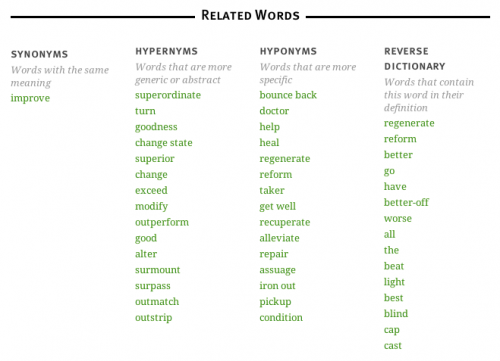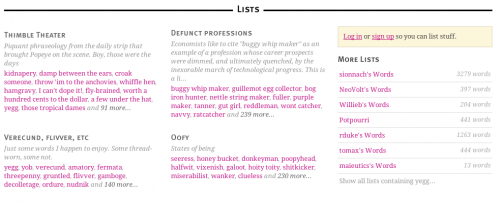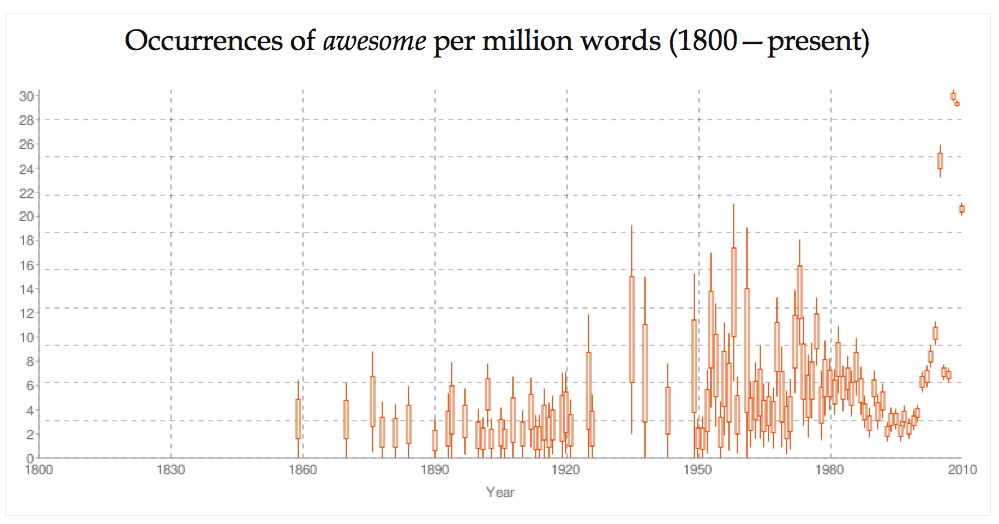We’re happy to announce today a new look for the (millions and millions of) Wordnik word pages:
The new pages are cleaner, easier to navigate and read, more colorful, and have been shown in controlled, double-blind experiments to increase the love of words, writing and speaking skills, and vocabulary retention by up to 115% in test subjects*.
New features include an expanded Related Word (thesaurus) section, with a new “Reverse Dictionary” section:
Word pages now include list previews, so you can easily see information about the lists that include the word you’ve looked up:
We’ll be rolling out more improvements and more new features across all of Wordnik.com over the next few weeks. As always, you can send us your thoughts via feedback@wordnik.com or by leaving a comment here.
[*test subjects may or may not have been Wordnik employees and their families.]



